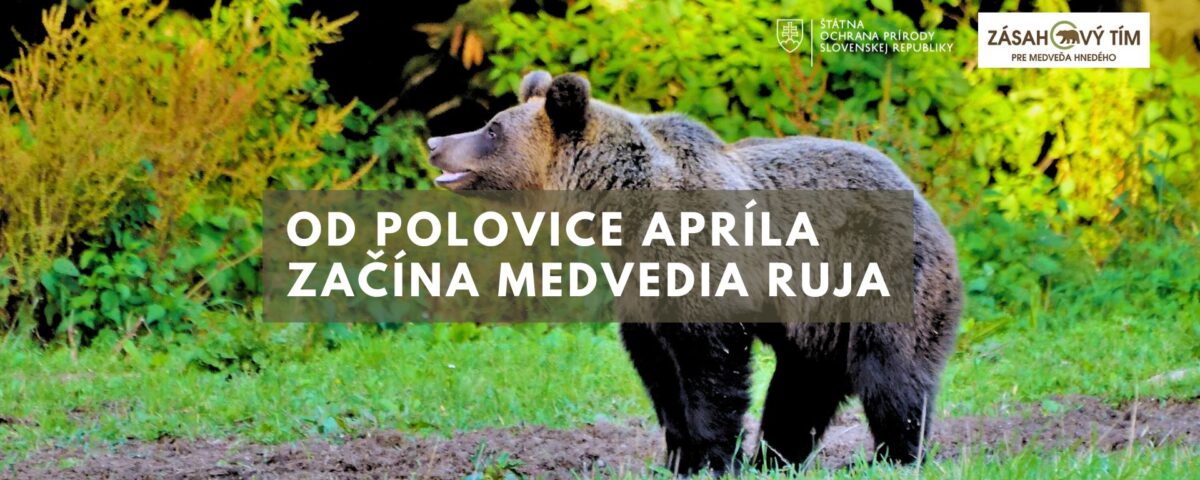SNC SR Intervention Team urges members of public to be cautious. The bear oestrus begins in mid-April.

As the nice April weather makes us more eager to go out, the Brown Bear Intervention Team of the State Nature Conservancy of the Slovak Republic (SNC SR Intervention Team) urges the public to be more cautious in the forest terrain as the bear oestrus period begins.
Bear behaviour changes throughout the year with the changing seasons. With regard to human-bear encounters, hibernation is the least risky period and, on the contrary, the most risky is the period of bear oestrus. This period begins in the second half of April and lasts until the end of July.
Solitary male bears intensively search for oestrous females during this time. Although bears are extremely cautious and prefer to avoid contact with humans during this period, their activity increases during the day and, therefore, the likelihood of human-bear encounters increases accordingly.
As a species, brown bears are polygamous. The male follows the female, in some cases staying with her for more than 3 weeks. The male accompanies the female for the entire time, defending her from other males and even from humans.
The period of bear oestrus is very stressful for the guiding females who are protecting their cubs. In fact, the males routinely attack or kill the cubs in order to bring the female bear back into oestrus. For this reason, female guiding bears temporarily leave their home ranges and seek safety in new territories without adult males.
In the event of an encounter with a guiding female bear, the bear will warn her cubs to hide by growling. However, there are occasions when the female bear fails to warn her cubs as she fails to smell the approaching human. The human will then inadvertently come into the space between the cubs and their mother, at which point an attack may occur. In fact, statistically, this is the most common cause of bear attacks on humans. However, in the vast majority of cases the female bear registers humans earlier and the contact does not occur at all.
A bear sometimes lunges at the human in self-defence – it is a warning to make the human go away. This behaviour can be perceived by humans as attack. in this case, it is necessary to back away slowly and move away. In the event of an attack, it is necessary to lie down on the ground, cover one‘s neck and head with one’s hands, and wait until the attack has passed and the bears have moved away. Active defence during the attack will only make the situation worse.
Further detailed information on how to act in the case of a bear encounter are available on the SNC SR Brown Bear Intervention Team’s website https://zasahovytim.sopsr.sk/.
This press release was prepared by the Department of Communication and Promotion of the State Nature Conservancy of the Slovak Republic.
